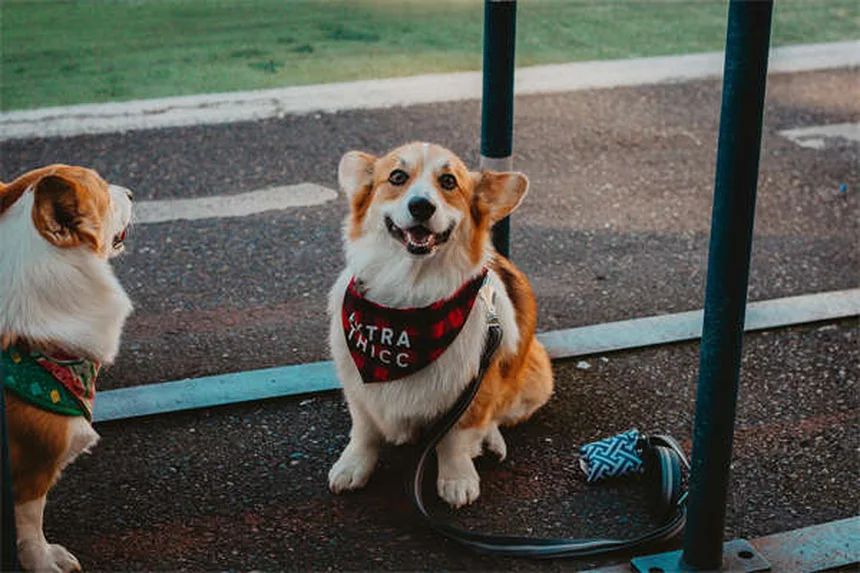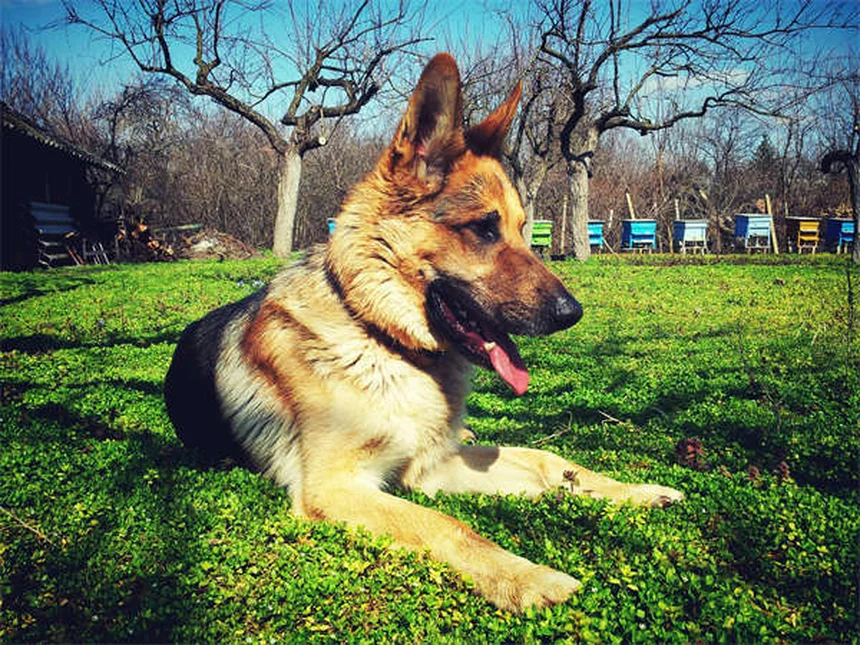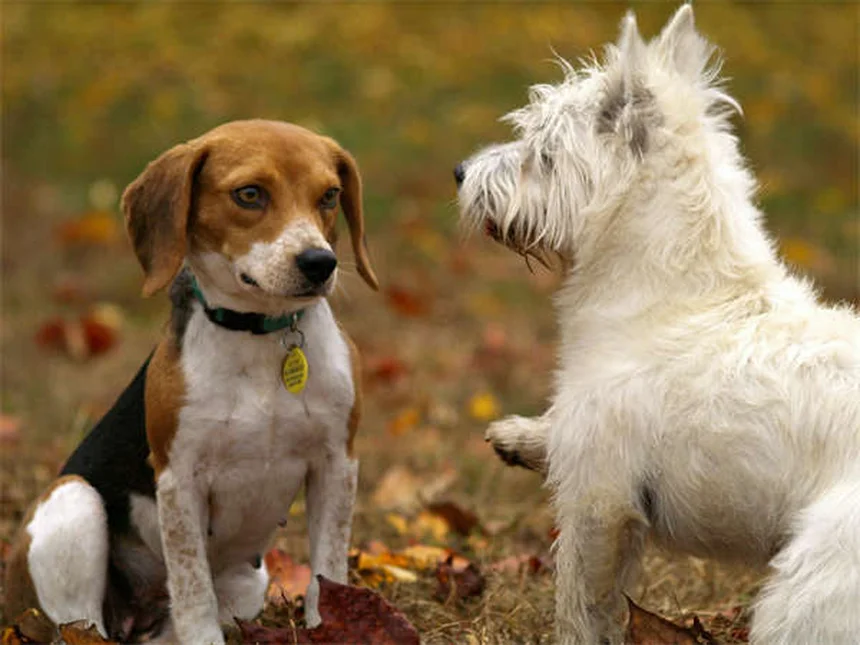Advertisement
Should your dog wear goggles? The answer is yes - if they fall into certain high-risk categories! Dog eye protection isn't just a fashion statement - it's serious business for breeds with prominent eyes, working dogs, and pups with light sensitivity. Dr. Jessica Stine, a veterinary ophthalmologist, confirms that protective eyewear can prevent injuries and shield against harmful UV rays that worsen conditions like pannus in German Shepherds.We've all seen those adorable pictures of dogs in sunglasses, but here's what you might not know: for some dogs, eyewear is as essential as their collar. Brachycephalic breeds like Pugs and Boston Terriers are practically walking eye injury risks with their protruding eyes. And if your dog's a working K9 or spends hours outdoors? Those goggles could mean the difference between healthy vision and serious problems down the road.Think about it this way - you wouldn't let your kids play outside without sunscreen, right? For certain dogs, eye protection is just as non-negotiable. The good news? Today's dog goggles are more comfortable and effective than ever. But before you rush to buy, let's break down exactly when and why your pup might need this protection.
E.g. :Dog Regurgitation vs Vomiting: 5 Key Differences You Must Know
Advertisement
- 1、Why Your Dog Might Need Eye Protection
- 2、Sun Protection: It's Not Just About Cataracts
- 3、Post-Surgery Protection: More Than Just the Cone
- 4、Choosing the Right Eyewear for Your Pup
- 5、Recognizing When Your Dog Needs Eye Protection
- 6、Making the Decision: Is Eye Protection Right for Your Dog?
- 7、Beyond the Basics: Additional Benefits of Dog Eye Protection
- 8、The Emotional Benefits of Eye Protection
- 9、Innovations in Canine Eyewear Technology
- 10、Common Myths About Dog Eye Protection
- 11、Real-Life Success Stories
- 12、FAQs
Why Your Dog Might Need Eye Protection
More Than Just a Fashion Statement
Let's be honest - a dog wearing goggles is adorable. But beyond the cuteness factor, there are real health benefits to canine eyewear. Dr. Jessica Stine, a veterinary ophthalmologist, explains that dog eye protection serves two main purposes: preventing injuries and shielding from sun damage.
Did you know that some breeds are practically built for eye problems? Brachycephalic dogs like Pugs and Boston Terriers have those big, beautiful eyes that make them prone to scratches and ulcers. Their eyes stick out more and sit closer to the ground, making them walking targets for branches and bushes.
When Protection Becomes Essential
For working dogs - think police K9s or search-and-rescue pups - eye protection isn't optional. These heroes face dust, debris, and who-knows-what else during their missions. And for blind dogs? Goggles can prevent further damage from accidental bumps and scrapes.
Here's a quick comparison of dogs who might benefit most from eyewear:
| Dog Type | Risk Factor | Protection Needed |
|---|---|---|
| Brachycephalic breeds | High - prominent eyes | Physical protection |
| German Shepherds | Sun-sensitive conditions | UV protection |
| Working dogs | Environmental hazards | Dual protection |
Sun Protection: It's Not Just About Cataracts
 Photos provided by pixabay
Photos provided by pixabay
The UV Danger We Often Miss
Here's something surprising - while UV light causes cataracts in humans, dogs rarely get cataracts from sun exposure. Dr. Lucien Vallone explains that dogs simply don't live long enough for UV damage to accumulate that way. But wait - does that mean dog sunglasses are pointless?
Not at all! UV exposure can worsen conditions like pannus, especially in German Shepherds. This autoimmune disease can lead to blindness if untreated. While medication helps, reducing sun exposure makes a big difference. That's where doggie sunglasses come in handy.
When the Sun Becomes the Enemy
Imagine having your eyes dilated at the eye doctor, then walking outside into bright sunlight. Ouch, right? Dogs with iris atrophy experience this discomfort regularly. Their pupils stay dilated, making them extra sensitive to light. For these pups, sunglasses aren't just helpful - they're a relief.
Post-Surgery Protection: More Than Just the Cone
The Elizabethan Collar Alternative
We've all seen dogs rocking the "cone of shame" after surgery. But did you know goggles can sometimes replace these awkward collars? Dr. Peter Accola notes that while e-collars prevent face rubbing, well-fitted goggles can protect healing eyes while giving dogs more freedom.
Here's the catch - poorly fitted eyewear can do more harm than good. Imagine goggles slipping and scratching the eye they're meant to protect. That's why veterinary ophthalmologists stress proper fit above all else.
 Photos provided by pixabay
Photos provided by pixabay
The UV Danger We Often Miss
Dogs recovering from eye surgery face a tough situation. Their eyes itch and bother them, but scratching could undo the surgery. While cones work, some dogs adapt better to goggles. The key is finding what works for your pup's personality and healing needs.
Choosing the Right Eyewear for Your Pup
Fit Comes First
Forget about human-style sunglasses - no dog will keep those on for long. All effective dog eyewear uses goggle-style designs with secure straps. The perfect fit means your dog can eat, drink, and move comfortably while wearing protection.
Think about it - would you wear uncomfortable glasses all day? Neither will your dog. That's why proper sizing matters so much. Measure carefully and don't settle for "close enough."
The Training Process
Some dogs take to goggles like they're born to wear them. Others... not so much. The secret? Patience and positive reinforcement. Start with short sessions and lots of treats. If your dog absolutely refuses, don't force it - there might be other protection options.
Remember - no prescription lenses needed! Unlike humans, dogs rarely need vision correction. Focus on finding durable, comfortable protection that suits your dog's lifestyle.
Recognizing When Your Dog Needs Eye Protection
 Photos provided by pixabay
Photos provided by pixabay
The UV Danger We Often Miss
How can you tell if your dog has eye issues? Watch for squinting, redness, excessive tearing, or pawing at the eyes. These signs mean vet visit now, not later. Many serious eye problems could be prevented with early detection.
Is your older dog suddenly sensitive to light? It might be iris atrophy. Just like our eyes change with age, dogs' eyes do too. The difference is they can't tell us when something's wrong - we have to notice for them.
Prevention Beats Treatment
Regular vet check-ups are your first line of defense. Annual visits for adult dogs, twice yearly for seniors. If your vet recommends eyewear, view it as an investment in your dog's comfort and health. Plus, let's be honest - a dog in sunglasses is basically the coolest thing ever.
Making the Decision: Is Eye Protection Right for Your Dog?
Consulting the Experts
Before buying anything, talk to your vet. They know your dog's specific needs and can recommend the best protection options. What works for a search-and-rescue German Shepherd might be overkill for your couch-loving Pug.
Consider your dog's lifestyle. Does your pup spend hours outdoors? Work in challenging environments? Have existing eye conditions? These factors all influence whether and what kind of eyewear makes sense.
The Comfort Factor
At the end of the day, your dog's comfort matters most. The best protection in the world won't help if your dog refuses to wear it. Be prepared to try different styles and be patient during the adjustment period. Your persistence could save your dog from serious eye problems down the road.
Beyond the Basics: Additional Benefits of Dog Eye Protection
Swimming Safety You Haven't Considered
You might think goggles are just for land adventures, but they're game-changers for water-loving dogs too. Chlorine and saltwater can seriously irritate your pup's eyes - ever seen your dog rubbing their face after a swim? That's not just water in their eyes causing discomfort.
Doggie goggles create a protective barrier that keeps chemicals and bacteria out while letting your pup see clearly underwater. For retrievers and other water breeds, this means fewer eye infections and more fun swim sessions. Plus, watching your dog dive with goggles on is absolutely priceless entertainment!
Winter Hazards That Might Surprise You
Snow blindness isn't just a human problem - dogs can suffer from it too. Those bright winter landscapes reflect UV rays that can damage your dog's eyes over time. And let's not forget about ice particles and wind during winter walks that can scratch delicate corneas.
Here's a quick comparison of seasonal eye hazards:
| Season | Common Hazards | Protection Solution |
|---|---|---|
| Summer | UV rays, dust, pollen | UV-blocking goggles |
| Winter | Snow glare, ice particles | Polarized goggles |
| Spring/Fall | Pollen, debris, insects | Wraparound protective eyewear |
The Emotional Benefits of Eye Protection
Reducing Anxiety in Visually Impaired Dogs
Did you know that goggles can actually help blind or visually impaired dogs feel more secure? The gentle pressure from properly fitted eyewear provides constant orientation, similar to how a weighted blanket comforts anxious humans. It's like giving your dog a reassuring hug around their face.
Many owners report their blind dogs become more confident explorers when wearing goggles. The protection prevents surprise bumps to sensitive areas, allowing dogs to move freely without fear of sudden pain. It's amazing how such a simple accessory can dramatically improve quality of life!
Bonding Through Shared Experiences
Here's a fun thought - when you and your dog both wear sunglasses on walks, you're creating shared experiences that strengthen your bond. Dogs are incredibly observant and often mirror our behaviors. When they see you putting on eyewear, they learn it's a normal part of outdoor adventures.
I've seen dogs get genuinely excited when their goggles come out, associating them with fun activities. One golden retriever I know does happy circles when he sees his "adventure glasses" because he knows they mean beach time or hiking!
Innovations in Canine Eyewear Technology
Smart Features You Didn't Know Existed
Modern dog goggles aren't just plastic and straps anymore. Some high-tech options now include anti-fog coatings that keep vision clear during intense activity, while others have interchangeable lenses for different light conditions. There are even models with built-in cameras so you can see what your dog sees!
But here's the real question - are these fancy features worth the extra cost? For most dogs, basic UV protection and physical barrier are sufficient. The high-tech options shine (pun intended) for working dogs or those with specific medical needs where visibility and documentation matter.
Customization Options for Fashion-Forward Pups
Who says safety can't be stylish? Today's market offers everything from classic black to neon pink goggles, with some companies even offering prescription lenses for dogs with actual vision problems (though these cases are rare). You can find designs that match your dog's personality - from sleek and professional to downright silly.
My personal favorite? The "aviator" style that makes every dog look like a tiny pilot. Just try not to laugh when your chihuahua rocks this look with complete seriousness. The confidence some dogs develop when wearing their "signature style" is truly remarkable to witness.
Common Myths About Dog Eye Protection
"Dogs Don't Need Sunglasses Because They Have Third Eyelids"
Let's bust this myth wide open. While dogs do have nictitating membranes (that cool inner eyelid), they don't block UV rays. These membranes help with eye lubrication and minor debris protection, but offer zero defense against sun damage. It's like thinking your car's windshield wipers will protect you from sunburn!
The truth is, many dogs squint in bright sunlight just like we do. Watch your pup next time you're out on a sunny day - if they're constantly blinking or avoiding looking toward the sun, they're telling you the light bothers them.
"My Dog Would Never Tolerate Wearing Goggles"
I hear this all the time, but here's the reality - most dogs adapt surprisingly well with proper introduction. Start young if possible, but even older dogs can learn to accept eyewear. The key is making it a positive experience with treats and short practice sessions.
Think about it - dogs happily wear sweaters, booties, and even Halloween costumes. Goggles are just another accessory that quickly becomes normal with patience and the right approach. The trick is finding the perfect fit so they're comfortable from the start.
Real-Life Success Stories
From Reluctance to Enthusiasm: A Transformation Tale
One of my favorite cases involved a stubborn bulldog named Meatball who initially hated his goggles. His owner almost gave up after three days of struggling, but persistence paid off. By day seven, Meatball was strutting proudly on walks, even nudging his goggles when he wanted to go outside!
This transformation happened because the owner made goggle time equal adventure time. The goggles became Meatball's ticket to longer walks and new smells. Now he associates them with all his favorite activities - proof that attitude shifts are possible with the right motivation.
The Working Dog Who Couldn't Work Without Protection
A search-and-rescue German Shepherd named Koda was facing early retirement due to worsening pannus. His handler introduced specially designed goggles, and the results were remarkable. Not only did Koda's condition stabilize, but he actually performed better because he wasn't squinting in sunlight anymore.
Koda's story shows how the right eyewear can preserve careers for working dogs. These animals dedicate their lives to service - shouldn't we give them every tool to succeed comfortably? His goggles became as essential as his training and became part of his professional identity.
E.g. :Eye Protection for Dogs: Is It Necessary? | PetMD
FAQs
Q: Do all dogs need to wear goggles?
A: Not every dog requires eye protection, but certain breeds and situations make goggles essential. Brachycephalic breeds like Pugs, Boston Terriers, and Shih Tzus with their prominent eyes are prime candidates - they're practically designed for eye injuries! Working dogs exposed to dust, debris or harsh conditions benefit tremendously too. And let's not forget German Shepherds prone to pannus, that autoimmune condition worsened by UV exposure. While not mandatory for every pup, if your dog falls into these categories, goggles could save their vision. Always consult your vet first to determine if your specific dog needs this protection.
Q: Can dog goggles really protect against sun damage?
A: Absolutely! While dogs don't typically get UV-induced cataracts like humans, sunlight can seriously worsen conditions like pannus. Think of it like this - would you go to the beach without sunglasses? For light-sensitive dogs or those with iris atrophy (where their pupils stay dilated), quality dog sunglasses block harmful rays while reducing discomfort. The key is finding UV-protective lenses specifically designed for canines. Regular human sunglasses won't cut it - they don't stay on and often lack proper coverage. Look for goggles that offer 100% UVA/UVB protection to give your pup the same defense you'd want for yourself.
Q: How do I get my dog comfortable wearing goggles?
A: Patience and positive reinforcement are your best friends here! Start by letting your dog sniff and investigate the goggles without wearing them. When they show curiosity, reward with treats. Next, try brief indoor sessions - maybe just 30 seconds at first - with plenty of praise. Gradually increase wear time as your dog adjusts. Some pups take to goggles immediately (especially food-motivated ones!), while others need weeks of practice. Never force it - if your dog seems stressed, take a break and try again later. Remember, comfortable fit is crucial; poorly fitted goggles will make training impossible.
Q: What's better for post-surgery protection - goggles or the cone?
A: It depends on your dog and the surgery! Traditional e-collars (the "cone of shame") are vet favorites because they reliably prevent face rubbing. But for some dogs, especially active ones, well-fitted goggles can offer protection while allowing more mobility. The major advantage? Goggles let your dog see better during recovery. However, they must fit perfectly - loose goggles can slip and cause more harm. Some vets recommend using both initially: goggles for daytime when you can supervise, and the cone at night. Always follow your veterinarian's specific instructions for post-op care.
Q: How can I tell if my dog needs eye protection?
A: Watch for these red flags: excessive squinting, pawing at eyes, or light sensitivity (especially in bright conditions). If your dog has any eye condition diagnosed by your vet, ask about protective eyewear. Breed matters too - if you've got a Pug or Boxer, be proactive. For working dogs, prevention is key; don't wait for problems to appear. Older dogs developing iris atrophy often benefit from sunglasses too. When in doubt, snap a photo of your dog's behavior and show your vet. Remember, many eye issues start subtle but can become serious fast - early protection is always better than treatment later!

